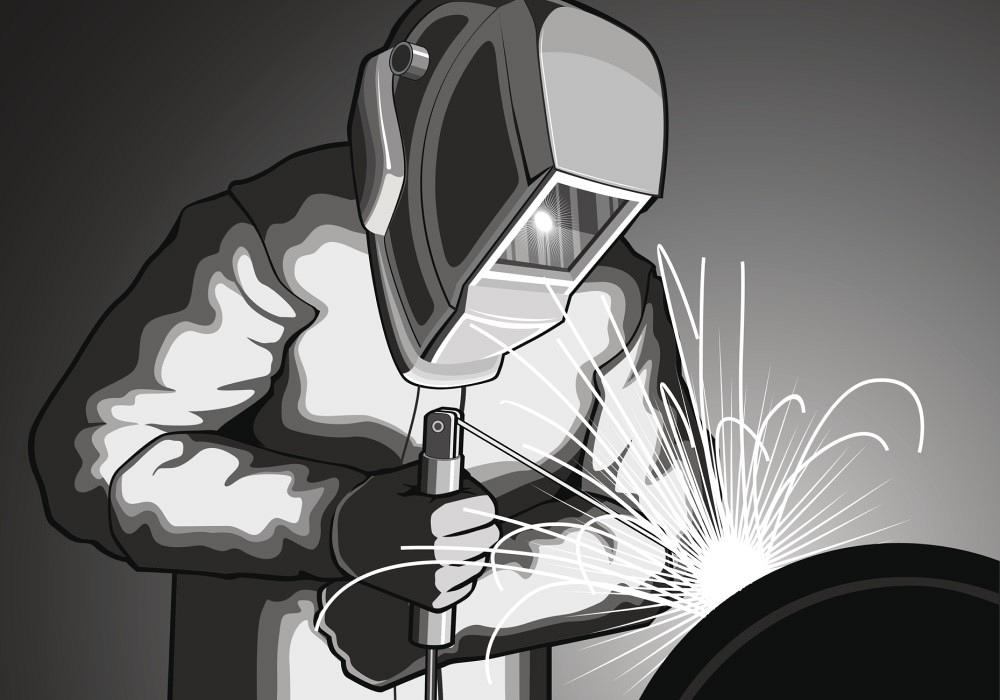Understanding Welding WPS: Comprehensive Overview for Welders
Understanding Welding WPS: Comprehensive Overview for Welders
Blog Article
Achieving Welding Quality: Introducing the Keys of WPS Application and Optimization
In the realm of welding, achieving quality is a quest that pivots on the meticulous application and optimization of Welding Treatment Requirements (WPS) By delving into the essential components, approaches, challenges, and finest practices linked with WPS, a globe of welding quality waits for those that are willing to explore its midsts.
Value of WPS in Welding
The Significance of Welding Procedure Specifications (WPS) in the welding sector can not be overstated, working as the backbone for making sure consistency, quality, and security in welding operations. A WPS offers in-depth directions on just how welding is to be executed, consisting of crucial variables such as products, welding procedures, joint design, filler metals, preheat and interpass temperatures, welding currents, voltages, travel speeds, and more. By sticking to a distinct WPS, welders can keep harmony in their job, causing constant weld high quality across different jobs.

Secret Elements of WPS
Discussing the integral components of a welding procedure specification (WPS) is important for understanding its role in welding operations. One essential aspect of a WPS is the welding process specification, which outlines the specific welding processes to be used, such as gas tungsten arc welding (GTAW) or secured steel arc welding (SMAW) By including these crucial aspects right into the WPS, welding procedures can be standardized, ensuring quality, performance, and safety and security in welding operations.
Strategies for WPS Optimization

Second of all, training and qualification of welding employees according to the specific demands of the WPS is extremely important. Offering detailed training programs and making certain that welders are certified to perform treatments laid out in the WPS can bring about better welds and minimized rework.
In addition, leveraging modern technology such as welding software and monitoring systems can assist in enhancing WPS. These devices can aid in tracking variables, guaranteeing specifications are within defined limits, and providing real-time feedback to welders, enabling them to make immediate adjustments for enhanced weld high quality.
Typical Difficulties and Solutions
Dealing with challenges in implementing the strategies for WPS optimization can prevent welding procedures' performance and high quality. One typical difficulty is insufficient training or understanding of the welding procedure specs (WPS) among the welding team. This can result in incorrect execution of welds, resulting in problems and rework. To address this, extensive training programs ought to be implemented to ensure that all welders are competent in interpreting and using WPS precisely.
One more challenge is the lack of correct paperwork and record-keeping, which is important for WPS optimization. Without clear records of welding criteria, materials made use of, and assessment results, it ends up being tough to recognize areas for improvement and guarantee uniformity in welding procedures. Carrying out a robust paperwork system, such as digital welding monitoring software program, can aid enhance record-keeping and help with information analysis for continual improvement.
In addition, inconsistent welding tools calibration and maintenance can present a significant obstacle to WPS optimization. Routine tools checks, calibration, and maintenance timetables ought to be stuck to purely to make sure that welding link parameters are properly regulated and maintained within the defined tolerances (welding WPS). By dealing with these usual challenges with proactive remedies, look at these guys welding operations can boost efficiency, high quality, and total welding excellence
Best Practices for WPS Application
To ensure successful WPS execution in welding procedures, adherence to industry requirements and thorough attention to information are extremely important. When initiating WPS application, it is crucial to start by completely recognizing the specific welding demands of the task. This requires an extensive evaluation of the welding treatment requirements, materials to be welded, and the environmental problems in which the welding will certainly occur.
Once the needs are clear, the next action is to choose the proper welding treatment that straightens with these requirements. This involves speaking with the appropriate codes and requirements, such as those given by the American Welding Culture (AWS) or the International Company for Standardization (ISO), to ensure compliance and quality.
Additionally, documenting the entire WPS application procedure is necessary for traceability and top quality control. Thorough documents should be maintained regarding welding parameters, product prep work, preheat and interpass temperature levels, welding consumables utilized, and any type of inconsistencies from the initial treatment. Normal audits and testimonials of the WPS can assist determine areas for enhancement and guarantee ongoing optimization of the welding process.


Conclusion
In final thought, the implementation and optimization of Welding Treatment Specifications (WPS) is crucial for attaining welding quality. By recognizing the crucial elements basics of WPS, carrying out efficient strategies for optimization, addressing typical challenges, and complying with finest methods, welders can make sure top notch welds and secure working problems. It is important for specialists in the welding market to focus on the appropriate application of WPS to improve total welding efficiency and attain desired outcomes.
The Importance of Welding Procedure Specs (WPS) in the welding industry can not be overstated, serving as the foundation for ensuring consistency, top quality, and safety and security in welding operations. A WPS supplies thorough instructions on exactly how welding is to be lugged out, consisting of crucial variables such as products, welding procedures, joint design, filler metals, preheat and interpass temperature levels, welding currents, voltages, traveling rates, and more. One important facet of a WPS is the welding procedure specification, which describes the certain welding procedures to be made use of, such as gas tungsten arc welding (GTAW) or secured metal arc welding (SMAW) By incorporating these essential aspects right into the WPS, welding treatments can be standard, making certain quality, efficiency, and safety in welding operations.
It is crucial for specialists in the welding sector to focus on the correct execution of WPS to boost total welding efficiency and attain wanted end results.
Report this page